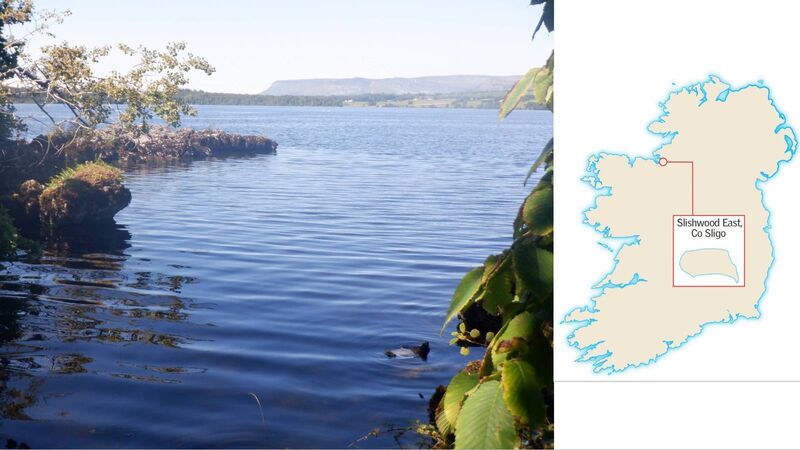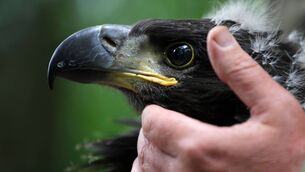Islands of Ireland: A visit to another Sligo island that might have inspired WB Yeats

Slishwood East Island, Lough Gill, County Sligo. Setting for Yeats's 'The Stolen Child'. Visited by famous botanist Robert Lloyd Praeger. Picture: Dan MacCarthy
This wooded County Sligo island is an important touchstone in the WB Yeats firmament. Slishwood East island is of minute size though a tiny bit larger than its near, obvious namesake, Slishwood West. The two islands, very close to the shore, but inaccessible from there, lie on the southern side of Lough Gill, County Sligo. They are named after one of the large woods that skirt this stunning lough and have as a near neighbour the unforgettable Inishfree and its eponymous, timeless poem that generations of schoolchildren have quoted by heart.
We know that the poet walked these woods and drew inspiration from them. In fact, some have suggested that the island that fired the poet’s imagination one wet day in London may have been Fairy Island on the northern shore of the lough and not Inishfree.
Where the woodland on the northwestern shore, Hazlewood, was the setting for ‘The Song of Wandering Aengus’, Slishwood East was very probably the setting for ‘The Stolen Child’.
“Where dips the rocky headland/ of Sleuth Wood in the lake/ There lies a leafy island/ where flapping herons wake/ the drowsy water rats.”
Yeats scholar, Nicholas Greene, has written that there is no Sleuth Wood anywhere in the area but has suggested the poet may have misheard local people referring to ‘Slish Wood’ as ‘Sleuth Wood’ or else chose the word for its sonic power. Either way, the wood on the shore does slope down to the water at the headland and there is most definitely a leafy island there.
“Whichever the island, the correct name is ‘Slish Wood’ though, not ‘Sleuth Wood’ or ‘Slewth Wood’ as Yeats wrote it in early printings of the poem. Slish comes from the Irish word ‘slios’ meaning ‘sloped’ or ‘inclined’,” writes Greene.
Yeats visited several of Lough Gill’s islands including Inishfree, Fairy Island, and Church Island where he was known to take picnics with friends. It is entirely probable that he did set foot on Slishwood East and, in fact, all of the 20 or so, islands on the lake.
The famous botanist Robert Lloyd Praeger, who has graced these pages many times, has also visited Slishwood East (as has, ever so humbly, this columnist). Lough Gill is associated with the arbutus or strawberry tree, and it is one of the few places in Ireland where it can be said to flourish.
The fruit of this evergreen tree is said to resemble a strawberry, hence the name.
Praeger observed the arbutus growing on the shores of Lough Gill in 1913 but had no idea of its wider prevalence until a correspondent, Reverend Michael O'Flanagan, wrote to him. He stated that "arbutus occurs in many places on the shores of Lough Gill. On far Slish Island [East] there is a trunk that was blown down many years ago, but is still alive, and which is four feet in circumference".
“On Near Slish Island [west] there is a standing arbutus 3.5 feet in circumference. All told, I saw three arbutus trees on Near Slish Island, four on Far Slish Island and one on the mainland.”
O'Flanagan noted that they ranged in age from a few years old to hundreds. The tree seems to occur at just three sites: Lough Gill, Lough Leane, Killarney, Co Kerry, and West Cork, owing to the particular climactic and soil conditions that are required for it to grow.
Praeger duly visited Slishwood East for himself and recorded several other species there including oak, holly, birch, rowan, yew, hazel and willow. Despite its abundant foliage it is not a difficult island on which to land though is ringed by a mini-barrier of rounded rocks.
Final word to the Sligo poet to encapsulate the magical nature of Lough Gill and his immortal words: “From ferns that drop their tears/ Over the young streams/ Come away, O human child!/ To the waters and the wild/ With a faery, hand in hand,/ For the world's more full of weeping than you can understand.”
For tours on Lough Gill: roseofinnisfree.com
: Yeats’s Poetic Codes, Nicholas Greene, OUP; 'Some Noteworthy Plants Found in or Reported from Ireland, R Lloyd Praeger, PRIA Vol 41









